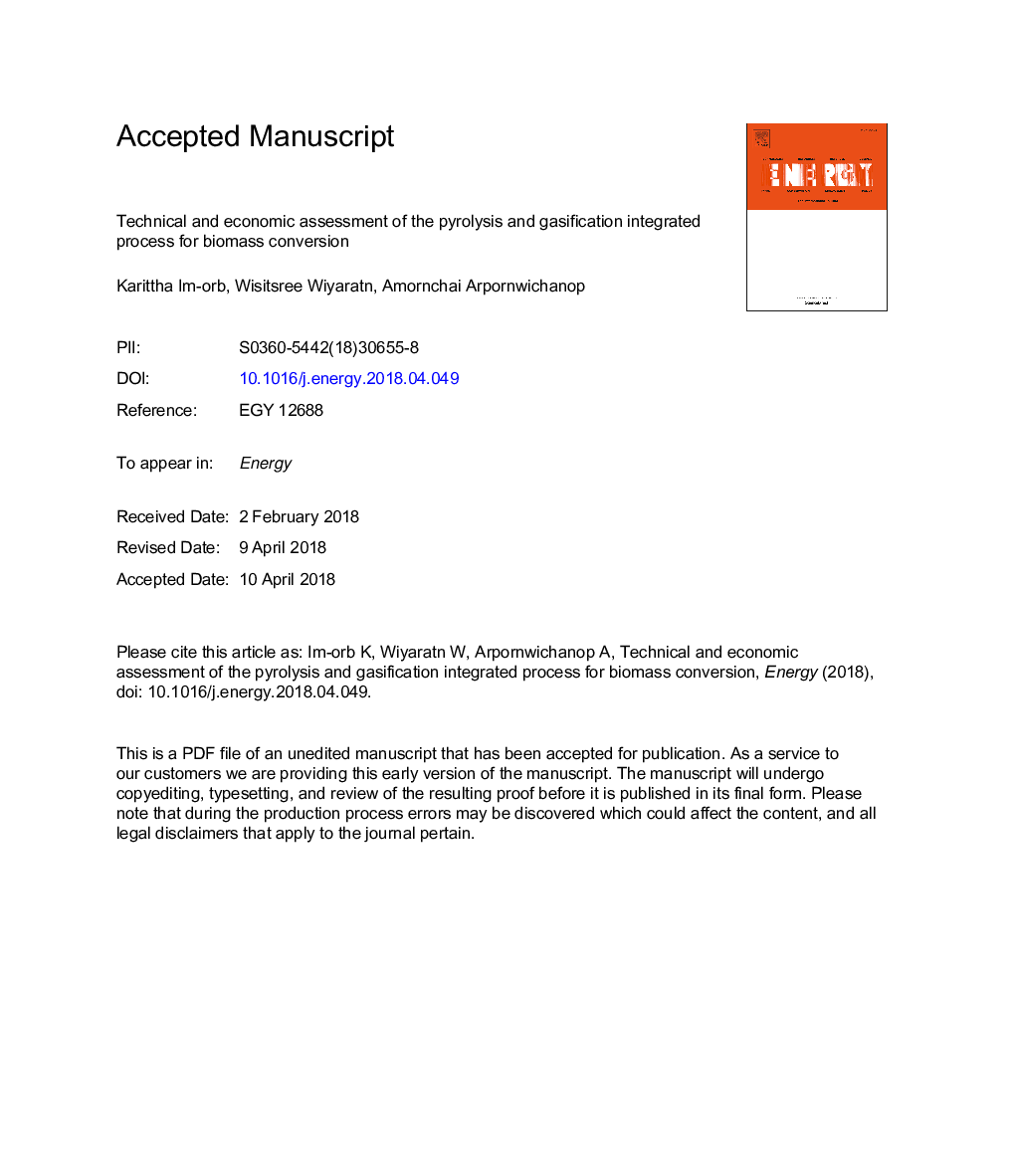| Article ID | Journal | Published Year | Pages | File Type |
|---|---|---|---|---|
| 8071590 | Energy | 2018 | 42 Pages |
Abstract
The technical and economic prospects for synthesis gas production via an integrated biomass pyrolysis and gasification (IBPG) process are evaluated for the case where rice straw is a considered feedstock. Modeling of the integrated process is performed by using the Aspen Custom Modeler program. The simulation results show that the production rates of synthesis gas and bio-oil derived from an IBPG process increase as pyrolysis temperature increases, due to the increased volatiles. Compared to a conventional biomass gasification, IBPG provides additional bio-oil as a valued by-product, releases less waste heat and offers higher energy efficiency at the same synthesis gas production rate. The IBPG process with a pyrolysis temperature of 700â¯Â°C shows the best technical performance. However, pinch analysis indicates that the IBPG process with a pyrolysis temperature of 400â¯Â°C or 500â¯Â°C and conventional biomass gasification is technically feasible; the optimum heat integration structures are achieved. The economic analysis, which considers only the reaction-related equipment, indicates that the IBPG process with a pyrolysis temperature of 500â¯Â°C offers synthesis gas and bio-oil production rates of 1.185 and 0.2044â¯kmolâ¯hâ1, respectively, and an energy efficiency of 68.86% is most economically feasible.
Related Topics
Physical Sciences and Engineering
Energy
Energy (General)
Authors
Karittha Im-orb, Wisitsree Wiyaratn, Amornchai Arpornwichanop,
